
Why Do Cats Purr When You Pet Them?
Introduction
Cats are the furry enigmas of the pet world, often captivating us with their soft purring. This soothing sound is commonly associated with contentment, like a tiny motor running happily in our laps. But purring isn’t just a one-note symphony of joy. It’s a complex vocalization that can signify a variety of emotional states. Yes, your cat might be purring because they’re getting their belly rubbed, but they could also be expressing anxiety or discomfort.
This article aims to unravel the mystery of why cats purr when you pet them. We’ll dive into the science behind this behavior, backed by expert insights and research findings. Understanding this soft rumble can help deepen the bond between you and your feline friend. So, let’s get purring!
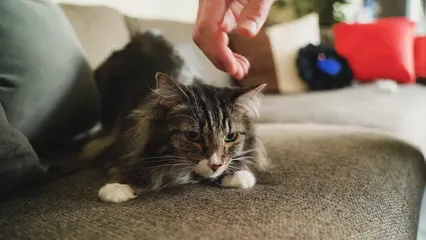
Speaking of feline happiness, why not enhance your cat’s playtime with some Catnip Toys? These delightful toys can stimulate their senses and keep them entertained for hours, ensuring your furry friend is both happy and engaged!
Understanding the Mechanics of Purring
How Do Cats Purr?
Purring is a fascinating physiological process. It all starts in the cat’s brain, where a unique neural oscillator sends rhythmic pulses to the laryngeal muscles. These muscles constrict and relax, creating a delightful sound as air passes through. This process happens during both inhalation and exhalation, giving the purr its continuous vibe.
The frequency range of a cat’s purr typically falls between 25 to 150 Hertz. This low-frequency sound isn’t just a treat for the ears; it may also have therapeutic effects. Research suggests that these vibrations can promote healing, stimulate bone growth, and ease pain. So, if you ever thought your cat’s purr was magical, you weren’t too far off!
Now, when you pet your cat and hear that comforting purr, remember: it’s not just about affection. It’s a blend of biology, psychology, and a sprinkle of cat magic!
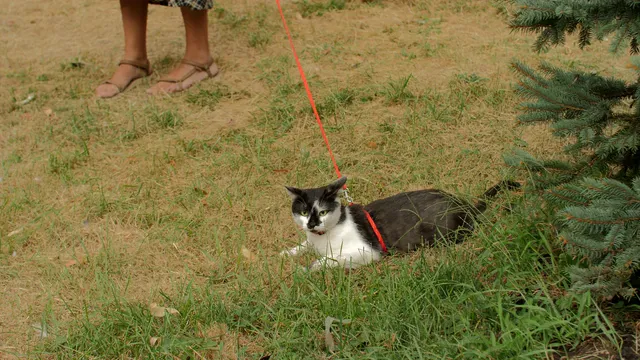
Reasons Cats Purr When Petted
1. Sign of Contentment
When your cat purrs while being petted, it’s often a clear sign of happiness. Picture this: your furry friend relaxed in your lap, eyes half-closed, and their body soft and pliable. If the tail is still, they are signaling pure bliss. Purring is like their personal cheerleader, shouting, “Yes, this is the life!”
Cats often purr when they find themselves in warm, safe environments. This could be during a sunny afternoon nap or while gobbling up their favorite meal. The act of purring is not just a vocalization; it’s a full-body experience. Their posture tells a story. A cat lying on its back, exposing its belly? That’s a feline version of a trust fall.
Additionally, consider the nuances of their body language. A relaxed cat might knead your lap, subtly communicating comfort and satisfaction. You might even notice them softly blinking at you. This slow blink is often referred to as a “cat kiss,” and it’s another way your kitty expresses affection. So, the next time your cat purrs while you pet them, know that it’s a delightful affirmation of their contentment.
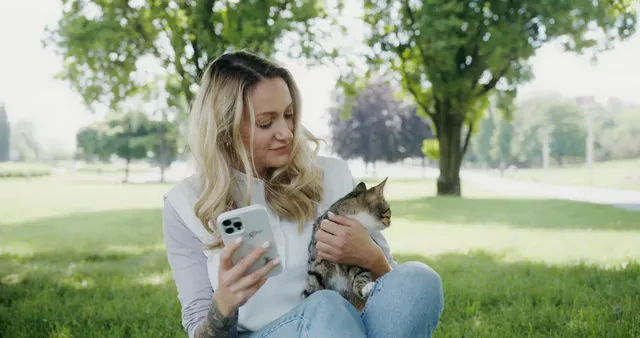
2. Seeking Attention
Cats are clever little creatures, and they know how to work their humans. When your cat purrs, they may be signaling for your attention. Think of it as their way of saying, “Hey, human! A little more love, please!” Kittens start this behavior early, purring to call their mother when they need food or comfort. This instinctive behavior often carries into adulthood.
Adult cats continue to use purring as a tool for communication. They may rub against your legs while purring, a clear sign that they want a scratch or a snuggle. This is often accompanied by a gentle head-butt, reinforcing their request for affection.
Interestingly, studies show that cats can modify their purrs to be more appealing to humans, especially when they want something. They might combine their usual purring with a high-pitched meow, mimicking a baby’s cry. This technique is quite effective; it pulls at our heartstrings and encourages us to respond to their needs. So, the next time your cat purrs while nuzzling you, take note! They’re not just being cute; they’re actively soliciting your attention and affection.
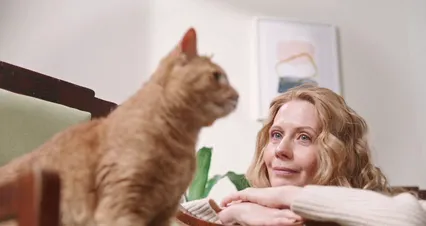
While you’re at it, why not pamper your feline friend with some delicious Cat Treats? These tasty morsels can make your kitty feel loved and appreciated, reinforcing that bond of affection even more!
3. Coping Mechanism
Purring isn’t just a happy sound; it can also serve as a coping mechanism. Imagine your cat at the vet, a place that often induces stress. When they purr in such environments, it may help soothe their anxiety. This self-soothing behavior is akin to how humans might hum to ease their nerves.
Research suggests that purring produces low-frequency vibrations, which can promote healing and reduce stress. Anecdotal evidence supports this; many cat owners have noticed their pets purring even when they’re feeling unwell. For instance, a cat recovering from surgery might purr softly while resting, indicating they’re using this mechanism to comfort themselves.
Moreover, some cats purr when they’re in pain. This behavior might seem counterintuitive, but it highlights the complex emotional world of felines. They don’t just purr when they’re happy; they also use it as a way to signal distress while seeking comfort. If you notice your cat purring in unusual contexts, like after a fall, it might be worth checking in with your veterinarian. Understanding this multifaceted behavior can enhance your connection with your furry companion, ensuring you provide the right support when they need it most.
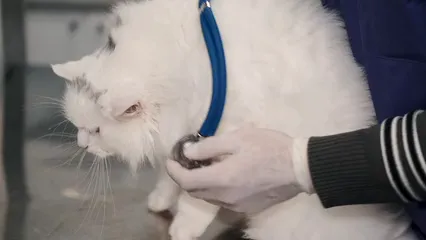
To keep your cat comfortable, consider investing in a cozy Cat Bed. A comfy spot to rest can help reduce their stress and promote relaxation!
4. Healing Properties
Have you ever noticed your cat purring while nestled beside you? This soothing sound might just be their way of sharing a secret—one that doctors and scientists have been piecing together for years. Welcome to the world of “purr therapy.” The vibrations produced by a cat’s purr can create a comforting atmosphere, not just for them but for us too.
Research has shown that the frequency of a cat’s purr, typically ranging from 25 to 150 Hertz, aligns with therapeutic frequencies known to promote healing in humans. These vibrations may help with tissue regeneration and even bone healing. Imagine your cat, the furry little healer, rejuvenating their body just by purring! Studies suggest that these vibrations can stimulate the growth of bones, repair tendons, and ease swelling. Cats have this remarkable ability to calm themselves and potentially speed up their recovery processes.
But it doesn’t stop there! According to veterinarians, the healing powers of purring go beyond self-soothing. When cats purr, they may also be sending out recovery signals to their human companions. Many cat owners have reported feeling a sense of relaxation while their feline friend purrs nearby. It’s as if your kitty is saying, “Chill out, human! Everything is going to be okay!”
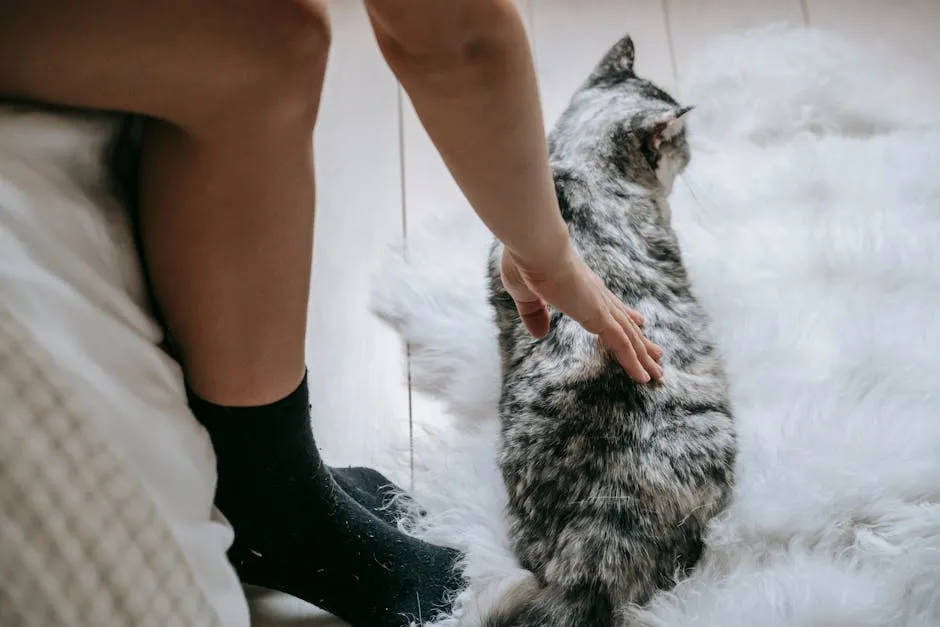
To create a calming environment, consider using a Cat Purring Sound Machine. It can help soothe both you and your pet, making those stressful moments a little easier!
5. Communication
Purring isn’t just a delightful sound; it’s a crucial form of communication among cats. Think of it as their way of chatting with you and fellow felines. When they purr, they’re not just expressing contentment. They’re relaying a message—be it love, hunger, or sometimes, even distress.
Cats have a talent for varying their purring sounds. A gentle, steady purr often signals relaxation and affection. But if you hear a more urgent, higher-pitched purr, it could mean they’re asking for something—like dinner or a much-desired scratch behind the ears. This nuanced communication helps you understand their needs better.
Interestingly, the relationship between mother cats and their kittens showcases the importance of purring. Kittens begin purring just days after birth, using the sound to signal their well-being and to bond with their mothers. This instinctive behavior continues into adulthood, with cats purring to greet their owners or other felines.
Moreover, studies have shown that cats can modify their purring to increase its effectiveness in getting your attention. They might add a meow, resembling a baby’s cry, to tug at your heartstrings. This little tactic often prompts humans to respond more quickly, fulfilling their needs faster.
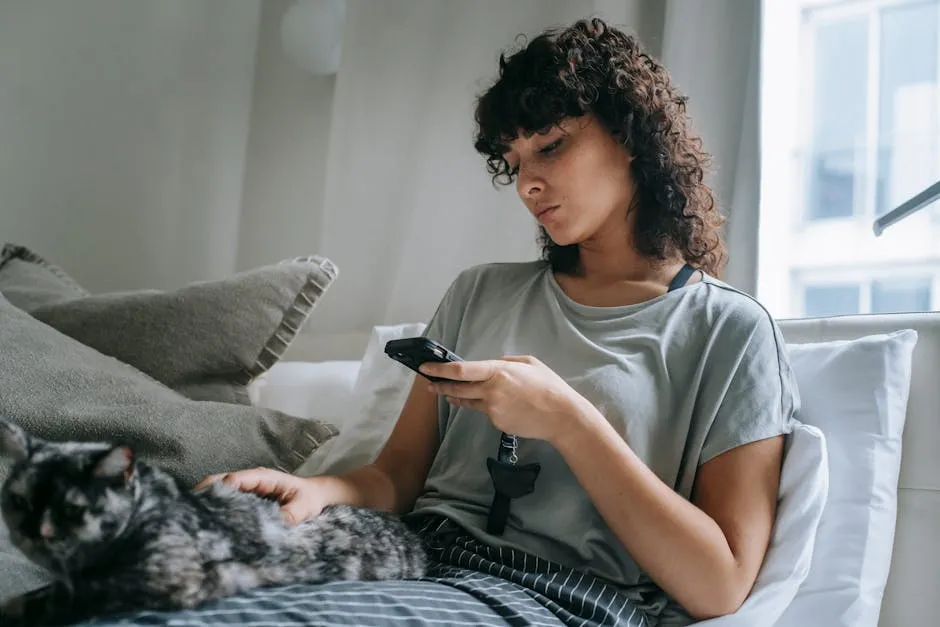
While you’re decoding your cat’s messages, consider getting a Cat Training Clicker to help reinforce positive behaviors. It’s a fun way to enhance communication with your furry friend!
Tips for Positive Interactions
Petting your cat can be a delightful experience, but it’s essential to do it right. Cats have their own unique preferences and boundaries. Here are some tips to ensure both you and your feline friend enjoy your time together without any misunderstandings.
First, keep an eye on the duration of your petting sessions. Cats often appreciate short bursts of affection. Try to limit petting to a few minutes at a time. This way, you minimize the risk of overstimulation. If your cat starts to fidget or twitch, it’s a sign to stop.
Observing body language is crucial. A flicking tail or flattened ears can indicate that your cat is feeling overwhelmed. If you notice these signs, it’s time to give your kitty some space. Remember, they can be quite particular about their comfort!
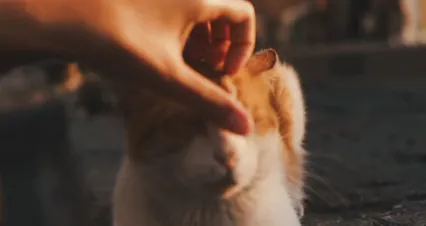
Now, let’s talk about the best areas to pet. Most cats enjoy gentle strokes around the head, under the chin, and behind the ears. These spots often lead to content purring and happy kneading. However, the belly is a tricky area. Many cats dislike being petted there, mistaking it for an invitation to playfight. Approach with caution!
When you do pet your cat, use slow, gentle strokes. Rapid or rough petting can quickly turn from pleasurable to irritating. A soft touch works wonders in keeping your cat relaxed and happy.
Lastly, timing matters! Cats can be moody, so try to approach them when they seem relaxed and ready for some love. If they’re lounging in a sunbeam, that’s your cue!
By being mindful of these tips, you can create positive interactions that strengthen your bond with your furry companion. Happy petting!
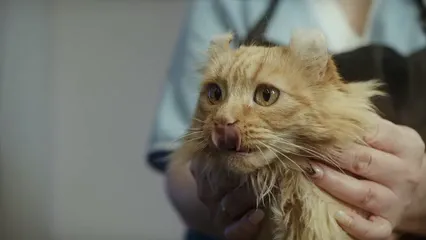
And to enhance your cat’s comfort during those petting sessions, consider a Cat Grooming Glove. It allows you to bond with your cat while keeping their coat looking fabulous!
FAQs About Cat Purring
Why do cats purr when they are in pain?
Cats often purr when they’re in distress or pain. This behavior serves as a self-soothing mechanism. Much like humans might hum to comfort themselves, cats use purring to calm their nerves. The vibrations from purring may help ease discomfort and provide a sense of relief. Studies indicate that the frequency of a cat’s purr can promote healing, potentially aiding in pain management. So, when you hear your cat purring during a vet visit, it may be their way of coping with stress.
Can all cats purr?
Most domestic cats can purr, but not all wild cats do so in the same way. While house cats purr with great regularity, larger felines like lions and tigers may only produce a similar sound when exhaling. The anatomy of purring varies among species, making it a unique trait of domesticated cats. So, while your tabby might be a professional purr-er, that big cat at the zoo may not share the same talent!
Is purring always a sign of happiness?
Not necessarily! While purring often indicates contentment, it can occur in various emotional contexts. Cats might purr when they’re anxious or seeking attention as well. For instance, a cat may purr while being petted but could also be expressing discomfort or fear. Always observe your cat’s body language to better understand what their purring might mean. A relaxed posture usually signals happiness, while tension or restlessness could suggest otherwise.
How can I tell if my cat is purring for attention or because they are happy?
Context is key! Pay attention to their surroundings and your cat’s behavior. If they’re purring while rubbing against you and seeking out your hand, they likely want attention. If they’re curled up in a cozy spot, purring quietly, they’re probably just enjoying themselves. Body language, such as tail position and ear orientation, can also provide clues. Observing these cues will help you decipher whether their purring is a call for affection or simply a sign of comfort.
How can I tell if my cat is purring for attention or because they are happy?
Determining the reason behind your cat’s purring can be a bit like solving a furry mystery. Start by observing their body language. A happy cat often shows relaxed body posture. Look for half-closed eyes and a gentle tail that isn’t flicking. If they are purring while nestled comfortably in your lap, it’s likely a sign of contentment. However, if your cat approaches you with a purr and rubs against your legs, they might be seeking your attention. Combine the purr with some head-butting or a nudge, and it’s a surefire way to tell they want a little extra love. Pay attention to their ears too! Forward-facing ears usually indicate curiosity or affection. If their ears are flattened back, it might signal discomfort or annoyance. This could be a cue to give them some space, even if they’re purring. Situational context matters! If you’re petting your cat and they start purring more loudly or urgently, it could indicate they want you to keep going. But if they suddenly switch to a more intense purr followed by a nip, you might have overstimulated them. Always remember to respect their boundaries. If you notice signs of agitation, like twitching tails or sudden movements, it’s time to pause the petting session. By honing in on these body language cues, you can become a purring detective, enhancing your bond with your cat.
Conclusion
Understanding why cats purr when petted reveals a fascinating glimpse into feline behavior. While purring is often associated with happiness, it can also indicate a range of emotions, including anxiety or the need for attention. Recognizing these signals is crucial for strengthening the bond you share with your furry friend.
By observing your cat’s body language alongside their purring, you can appreciate the nuances of their communication. A relaxed cat may purr contentedly, whereas a more intense purr could signal distress or a request for affection.
Incorporating this understanding into your interactions can lead to more meaningful and enjoyable moments with your cat. So, next time you hear that delightful rumble, take a moment to interpret what it means. Your cat’s purr is more than just a sound; it’s an invitation to connect on a deeper level. Embrace these moments and enjoy the unique companionship that only a cat can offer.
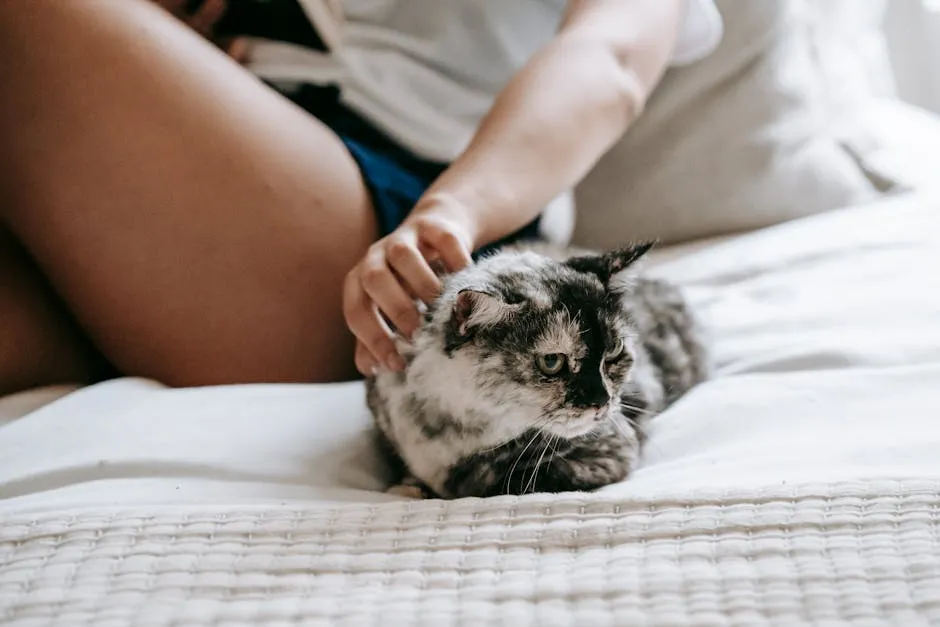
And don’t forget to keep your kitty hydrated with a Cat Water Fountain. It’s a fun way to encourage them to drink more water, which is essential for their health!
Please let us know what you think about our content by leaving a comment down below!
Thank you for reading till here 🙂
All images from Pexels




